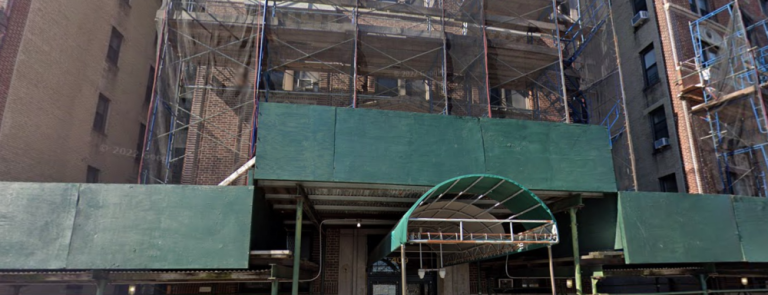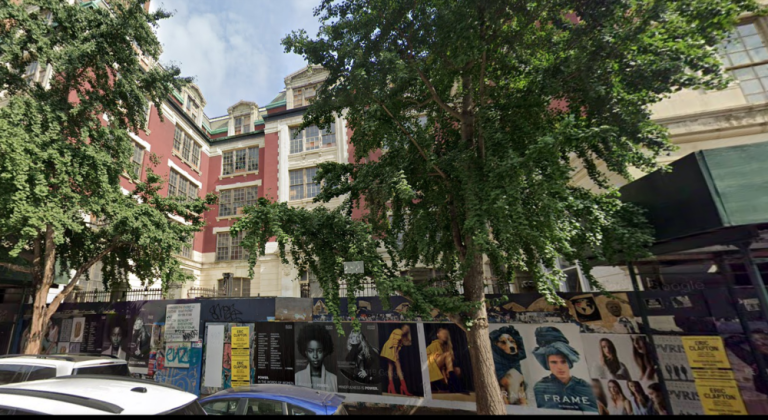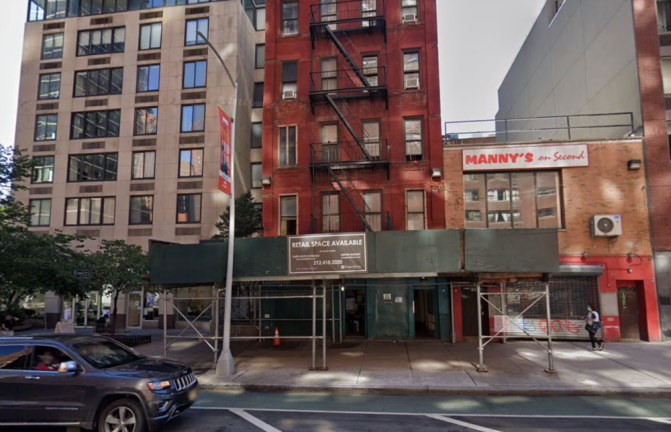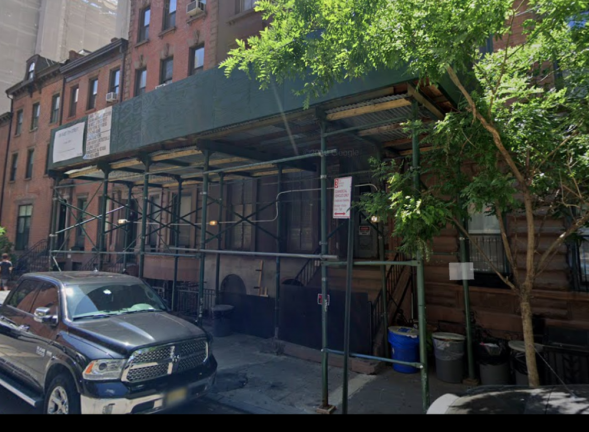Spirit of Shed Regs Subverted by Landlords Who Leave Them Up for Years: Report
The average sidewalk shed, or scaffolding, has been up for over 500 days, says the watchdog group Citizens Union, in a new report obtained exclusively by Straus News. The longest standing shed in Harlem has been up for 17 years. Borough President Mark Levine wants to assist tenants in rent regulated apartments to seek rent reductions if their building is surrounded by scaffolding for an extended period.
They stretch over, and obscure, more than 380 miles of New York sidewalks, in total. There are now nearly 9,000 of them and they have become a text book illustration of the law of unintended consequences.
They are sidewalk sheds, sometimes called scaffolding. Having proliferated to protect pedestrians from falling debris, they are now as much a presence on our streetscape as the Empire State Building, although less inspiring.
While their basic purpose is positive, Citizens Union says in a new report obtained exclusively by Straus News that these sidewalk sheds have become a problem because in many cases building owners find it cheaper to erect and leave these sheds, rather than fix the flaws in the facades of their buildings that the sheds are supposed to, temporarily, protect us from.
“The proliferation of sheds has damaged urban life in our city,” said the report from Citizen’s Union, a venerable reform group. “They obstruct sidewalks and entrances, cover landmarked buildings, attract trash, and often become safety risks themselves.”
The average shed has been up for 500 days, or nearly two years. But some have been up much longer. A shed at the legendary co-op building at 409 Edgecomb Avenue in the Sugar Hill neighborhood of Harlem has been there for 17 years, the record, dubious as it is. The building was built in 1917 and declared a landmark in 1993, in part because its residents included W.E.B. DuBois and Thurgood Marshall.
There are 147 sidewalk sheds in Manhattan that have been up for more than five years, according to the city’s Department of Buildings. That is far more than any other borough.
These include sidewalk sheds erected in 2010 at 1772 Second Avenue, 116 east 17th street and 605 east Ninth Street, an abandoned school near Avenue B. The East Village site was once the home of P.S. 64, but it has not housed a school since it was closed in the late 1970s. In recent years it housed the Charas/El Bohio Community Center, but they were evicted by Gregg Singer who bought it for $3.15 million at auction in 1998. More recently Madison Realty Capital has foreclosed on the property but lawsuits and protests by activists have stalled its sale. As the real estate battles rage, a sidewalk shed continues to surround the French Renaissance style building that was declared a Landmark back in 2006.
“Our city is home to some of the most beautiful architectural and engineering masterpieces in the world,” said Betsy Gotbaum, Executive Director of Citizen’s Union, “but too many of them are covered up for years by ugly structures that inconvenience New Yorkers.”
Much of the problem, Citizen’s Union said, stems from the city’s Façade and Inspection Program, known as local law 11.
“As it is currently structured, this program has led to a proliferation of sidewalk sheds that are kept up for months or years without any work done on their premise,” Citizen’s Union reported. “These sheds have become a permanent element of the New York City streetscape, altering the original spirit of the law.”
The program was originally created in 1980 after a piece of concrete fell from the seventh floor façade of a building on Broadway and killed a Barnard student, Grace Gold. The program was strengthened in 1998 by local law 11, which has become the shorthand name for the program.
Despite the law there have been several further fatalities. In December 2019 a piece of terra-cotta façade broke off a 17-story building near Times Square, killing Erica Tishman, an architect. The building owner had been previously fined for failing to repair the façade.
The department of buildings further tightened the rules. More than 15,000 buildings are required to undergo inspections every five years. The majority of those are in Manhattan. About one building in four failed its initial façade inspection in the current cycle.
“An indirect result of New York’s periodic façade safety inspection program is the proliferation of sidewalk sheds,” Citizens Union explained. “When a façade is found to be unsafe, the building owner must immediately protect the surroundings by erecting sidewalk sheds or other protective measures until the problems are repaired. But often, building owners delay or avoid repairing their façade, keeping the sidewalk sheds up unnecessarily.”
About 40 percent of all sidewalk sheds are erected to comply with local law 11. The rest are at construction sites. But those built to comply with local law 11 stay up longer, Citizens Union reported.
“Over half of all sidewalk sheds built to comply with local law 11 are older than a year, compared to about a third of sidewalk sheds built around construction projects,” the report said. “A major reason is that building owners prefer to delay or avoid spending money on correcting unsafe facades, and must maintain sheds as long as the façade is unsafe.”
Previous efforts to address the problem do not appear to have had much impact. So Mayor Adams, Borough President Mark Levine and several members of the City Council have proffered new plans.
A key measure would be to increase fees and penalties imposed on building owners who erect sheds but don’t then proceed with façade repairs. Mayor Adams has proposed penalties of up to $10,000 in certain business districts. Council Member Keith Powers has proposed to allow the city to make façade repairs and bill building owners in cases where they erect sheds and don’t then make the repairs.
Borough President Levine proposed to assist tenants in rent regulated apartments to seek rent reductions if their building is surrounded by scaffolding for an extended period, creating an incentive for landlords to move the work along.
Mayor Adams has also promised to expand a city program to focus on sheds that have been up for years.
There are also proposals to replace sheds with netting or other less intrusive forms of protection. Under Mayor Bloomberg, a design competition approved an alternative form of shed, painted white and with a much higher platform above the street. These are considerably more expensive and only one company is supposedly authorized to build them, although that company recently sued a competitor for offering something similar.
Citizen’s Union urged the mayor to coordinate the many ideas. “Over twenty proposals have been floated to address the issue of sidewalk sheds,” The group reported. “The Mayor should appoint one person to oversee these efforts.”
The group also urged a study of how much increasing penalties would eliminate sheds. “Given that several proposals rest in the assumption that increasing fines and penalties would reduce the proliferation of sidewalk sheds, more precise research is needed.”
The report also noted that sidewalk sheds have been erected around some 1,500 landmarked buildings. It endorsed a recommendation from borough president Levine to streamline the process for winning approval from the Landmark’s Commission for façade repairs, as well as assisting owners with compliance and repairs.
We would like to hear from you. If you are a business or resident who has been impacted by Sidewalk Sheds in your neighborhood please share your story with us at editor.ot@strausnews.com
“Our city is home to some of the most beautiful architectural and engineering masterpieces in the world,” but too many of them are covered up for years by ugly structures that inconvenience New Yorkers.” Betsy Gotbaum, Executive Director of Citizen’s Union



